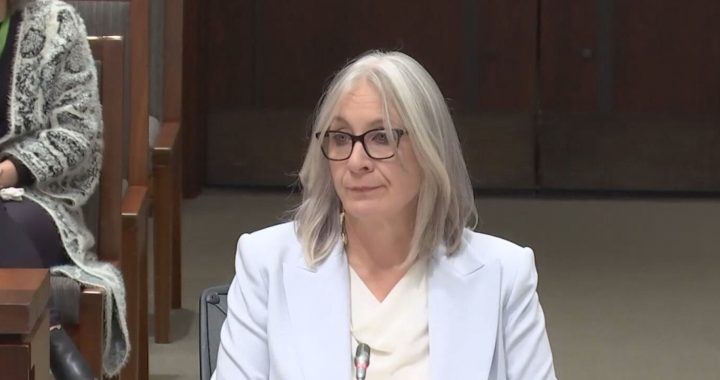
On Tuesday Manitoba’s Advocate for Children and Youth released a 115-page report detailing how 15-year-old Tina Fontaine was failed by the province’s child and family services system in the weeks and years before her death in 2014.
Daphne Penrose, who released her report in Sagkeeng First Nation Tuesday morning, makes five recommendations for improving child and family services in Manitoba.
Here they are, in Penrose’s own words:
My first recommendation is to Manitoba Education and Training and builds on the report I released in October 2018, about Circling Star. In that story, and in Tina’s, my team found compelling reasons and growing research on the impacts of absenteeism that calls into question the practice of expulsions and suspensions in public schools. My recommendation is that the recently formed Commission on Kindergarten to Grade 12 Education carefully examines the uses of these measures so they can be limited, reduced, and phased out.
My second formal recommendation is to Manitoba Health, Seniors, and Active Living. It has been ten months since the province released their mental health and addiction strategy, and while announcements and investments have been made by the government regarding Manitoba adults, children and youth —which the government identified as a population in desperate need — remain waiting to hear the implementation plans for the changes that are coming. If early intervention and upstream investments are more than mere buzzwords, then, as my recommendation lays out, the government will expedite the public release of a clear implementation plan to address the child and youth-specific recommendations contained in their Virgo report.
I make a recommendation also to Manitoba Justice – Victim Services to address the quality control measures that were lacking in their interactions with Tina and her family. While this system was involved for a number of years, barriers to access the service were plenty and overall, the service was not delivered to Tina in child-centred ways.
My recommendation to child and family services is focused on their responsibilities for child safety and in responding when children are in need of protection. What Tina might have benefitted from was access to the full continuum of services for children at imminent danger, and this continuum includes safe and secure treatment facilities that are therapeutic, culturally informed, and effective — or, as Tina described to her CFS agency, a place where it feels like home.
Finally, in recognition that access to time-sensitive safety and care information about children who are missing might mean the difference between life and death for some youth, I make a recommendation to Manitoba Families to create a new protocol to ensure that tailored and individual response plans are created for each child and youth who goes missing, given the strong correlation between missing persons, sexual exploitation, and other harms that can place young people at immediate risk of injury and death.
Some of these recommendations are large and will take some time to work through, and some can be more quickly implemented. However, what I hope the public hears from me today, through this report, and as we carry on in Tina’s memory, these changes cannot wait. What has been a persistent message to my team and me as we moved through this investigation and the writing of this special report is that not enough has changed since Tina died in 2014. In fact, what we know to be true from the youth we are working with in our advocacy program and who are still alive today, and which has been confirmed by public systems throughout this process, is that children and youth who present with the same issues today may find themselves getting the same responses and experiencing the same barriers to service that Tina did.
news.ca









